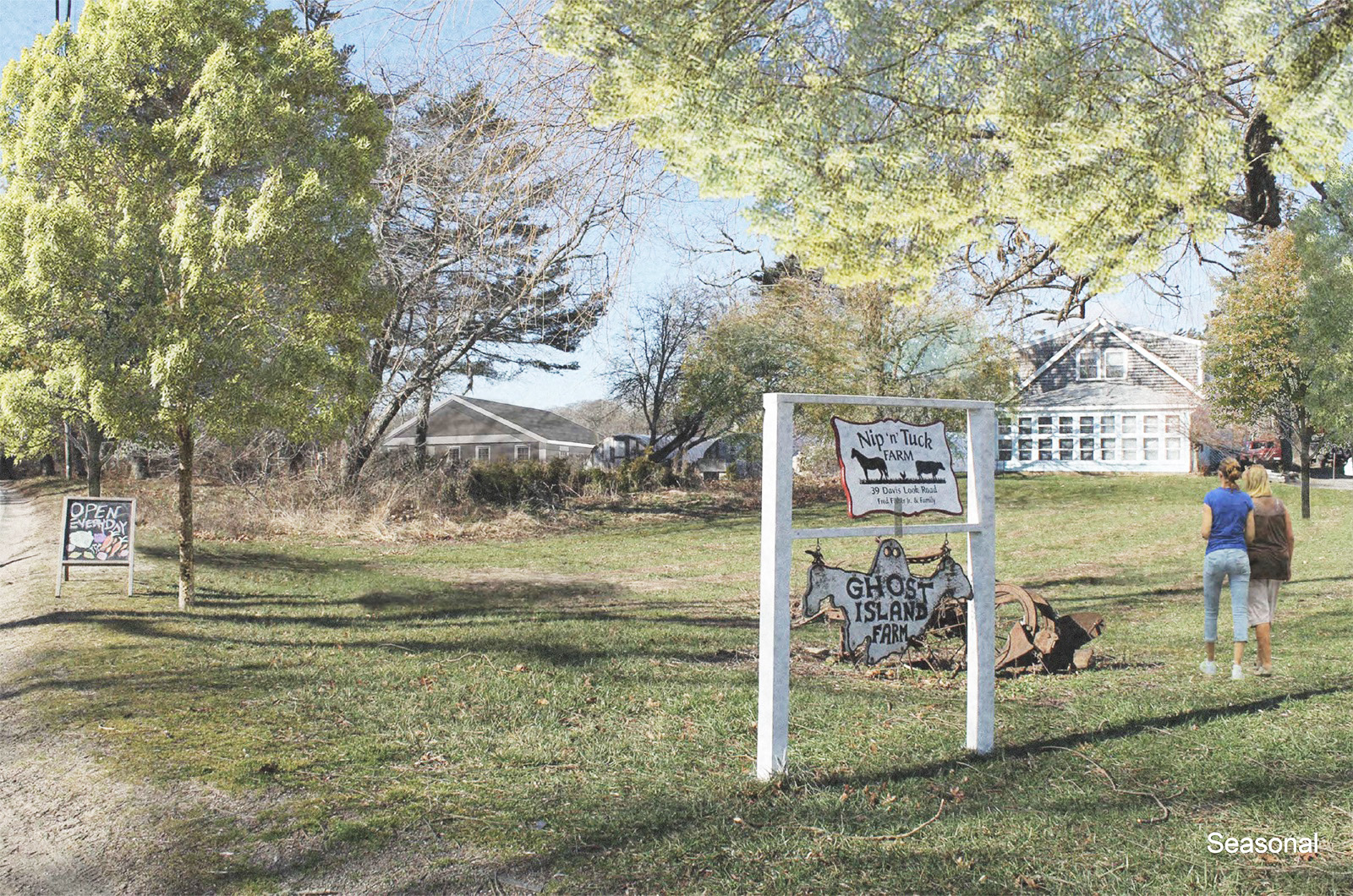An architect who serves on the Martha’s Vineyard Commission is floating a new housing strategy that he believes could help businesses construct low-cost workforce housing.
Michael Kim, the owner of Michael Kim Architecture in Brookline and the governor’s appointee on the commission, presented a study last week to the MVC that looked at the viability of housing for workers on employer-owned properties across the Island. The study was conducted by students in the graduate architecture program at MIT.
Eight locations on the Vineyard were analyzed using two prototype housing designs that could blend in with existing neighborhoods, while also managing to break even in the current sky-high Vineyard housing market.

The study found, according to Mr. Kim, that building small-scale housing could be accomplished a near net-zero cost to owners and be built quickly, potentially in as few as four months. At the Nov. 16 commission meeting, Mr. Kim said that the idea, while not a silver bullet, could chip away at the Island’s housing crisis while also boosting local businesses in need of workers.
“This is not going to solve the problem but it can help with resources we already have,” he said.
The concept comes as major housing projects, including the 60-unit Southern Tier affordable housing development in Oak Bluffs and the 40-unit Meshacket project in Edgartown, have been cleared for construction. But those large undertakings take years to work through permitting, financing and building, and often cost millions of dollars.
Mr. Kim, who has a home in Oak Bluffs, said the long red tape, high price tags and pushback that comes with these larger projects pushed him to explore other avenues.
The first prototype home design is five apartments in a single 3,000-square-foot, colonial-style home, geared toward year-round affordable housing. The second envisioned an industrial-style building that would have four bedrooms around a central living room and kitchen for seasonal workers.
The latter design could be uninsulated to keep down costs or partially insulated to accommodate winter rentals.
The concepts hinge on being built on land that entities, such as schools and businesses, already own to keep costs down. One Island builder estimated the year-round housing design could cost about $1.2 million and the seasonal housing would be about $268,000.
The study explored building these types of homes near Aquinnah town hall, the Martha’s Vineyard Public Charter School, Island Gymnastics, Ghost Island Farm, hospital land on New York avenue in Oak Bluffs, the regional high school, and the Martha’s Vineyard Boys and Girls Club.
The sites were all picked because they had the need for housing and the space to potentially accommodate the buildings.
The analysis found that the designs could skirt design concerns that larger affordable housing projects run into by looking like single-family homes or utility buildings that are already commonplace on the Island. They could also avoid the higher cost of building and the regulation-heavy process that larger projects endure and eventually break-even, Mr. Kim said.
The idea would not work for housing developers because the residences would turn only meager profits, according to the study. The exercise is also highly theoretical, Mr. Kim warned, though nearly all of the sites surveyed participated in the process.
“It’s just a study to place various buildings and price them,” he said.
Mr. Kim got the idea during a visit in San Francisco, where he said he saw schools build residences on their properties.
“It seemed like a good idea and I wondered, ‘Could this work on the Island,” he said. “The study shows, at least on paper, it very well could.”
Zoning changes that could make these sorts of homes allowable by right would further ease the burden of building, according to the report.
Fellow commissioners praised the idea, though several questioned the finances and practicality of having largely uninsulated houses for seasonal workers, even if only for the warmer months.
Joan Malkin, the chair of the commission, said the regional body could run workshops if people were interested in learning about the concept.
In an interview with the Gazette, Mr. Kim said those workshops have not started yet, but he wants to see Island businesses take the idea and run with it.
“We’re hoping to get a couple employers to come forward and say ‘Yeah, I need this.’” he said.







Comments (10)
Comments
Comment policy »